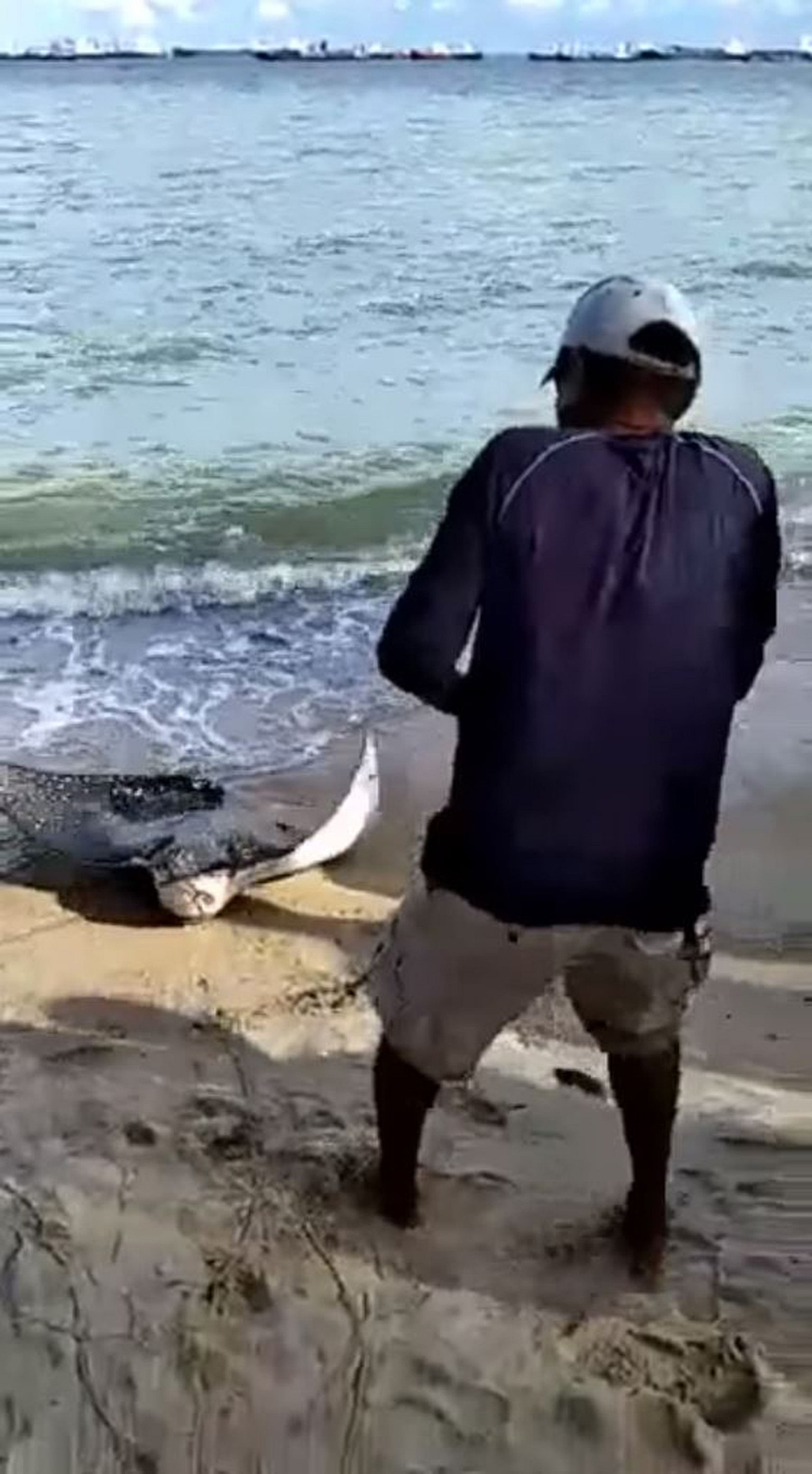A video clip of an eagle ray being reeled in at East Coast Park has been shared widely on social media since last Friday .
The three-minute clip starts with an angler doggedly pulling and tugging at his fishing rod as more than 10 onlookers watch.
About two minutes into the clip, three individuals help to pull the fishing line and the eagle ray appears - to the exclamation of onlookers. The ray is then dragged to shore as it thrashes its fins.
The clip was uploaded by Facebook user Raymond Khoo last Friday. As at Sunday, it had been shared by about 2,600 netizens.
When contacted, Mr Khoo said the clip was forwarded to him by a friend. He confirmed that the incident took place near Bedok Jetty.
Marine Stewards Singapore said the incident occurred on May 3 around 4.45pm.
The Straits Times was sent another WhatsApp video which showed the anglers impaling the ray's head with a large hook, so that they could drag it up the beach.
Dr Karenne Tun, director of the National Parks Board's (NParks) National Biodiversity Centre identified the eagle ray species as the white-spotted eagle ray, or Aetobatus ocellatus.
National University of Singapore (NUS) marine biologist Huang Danwei said there have been three species of eagle rays recorded in Singapore, of which the white-spotted eagle ray is the most frequently detected. It is classified as a vulnerable species on the International Union for Conservation of Nature's Red List of Threatened Species.
This is not the first time that a ray has been caught by anglers in Singapore. Last July, an 80kg honeycomb whipray was caught at Bedok Jetty after a three-hour tussle with an angler. Video clips of the ray being sliced up were shared online.

Mr Kelvin Lim, curator of vertebrate collections at the Lee Kong Chian Natural History Museum in NUS, said leisure fishermen are usually unable to tell if they have caught an endangered fish, but they should release it if the animal is alive and not seriously injured.
"The animals do get injured when they are hooked, usually at the mouth. But practitioners of catch and release believe that they are able to heal quickly," he said.
Mr Lim added that the eagle ray would have been in distress the moment it was hooked, and its distress would have multiplied when it was pulled out of the water.
Assistant Professor Huang, who is from NUS' department of biological sciences, said: "We ought to avoid interacting or getting too close to threatened species. Rather, admire from a distance where possible, to minimise further harm to them, and to prevent injuries to ourselves."
Dr Tun said voluntary catch-and-release fishing is one of the best practices for recreational fishing.
"This is especially for juveniles, and endangered and threatened species," she added.
She said NParks and Marine Stewards Singapore jointly developed an information board at Bedok Jetty, and the white-spotted eagle ray is included on the board's catch-and-release list. "Responsible fishing practices will help us maintain our rich biodiversity and will the population to continue to thrive," she added.
Mr Lim noted that the people in the clip who pulled in the ray seemed to know how to keep themselves safe. "Seasoned fishermen know to avoid the thrashing tail where the stinging barbs are. Members of the public should not go near a live stingray in distress because they may get stung by it," he said.
Prof Huang said the white-spotted eagle ray is widespread throughout the tropics in the Indo-Pacific region, and has been spotted in Singapore along the southern coast .
Mr Lim said the species can grow up to 3m wide and some of its notable features include a protruding head and numerous white spots. Unlike many stingrays that stick to the bottom of the sea, the eagle ray swims about, flapping its fins.
Late last year, a school of five eagle rays were spotted flitting along Labrador Park.

